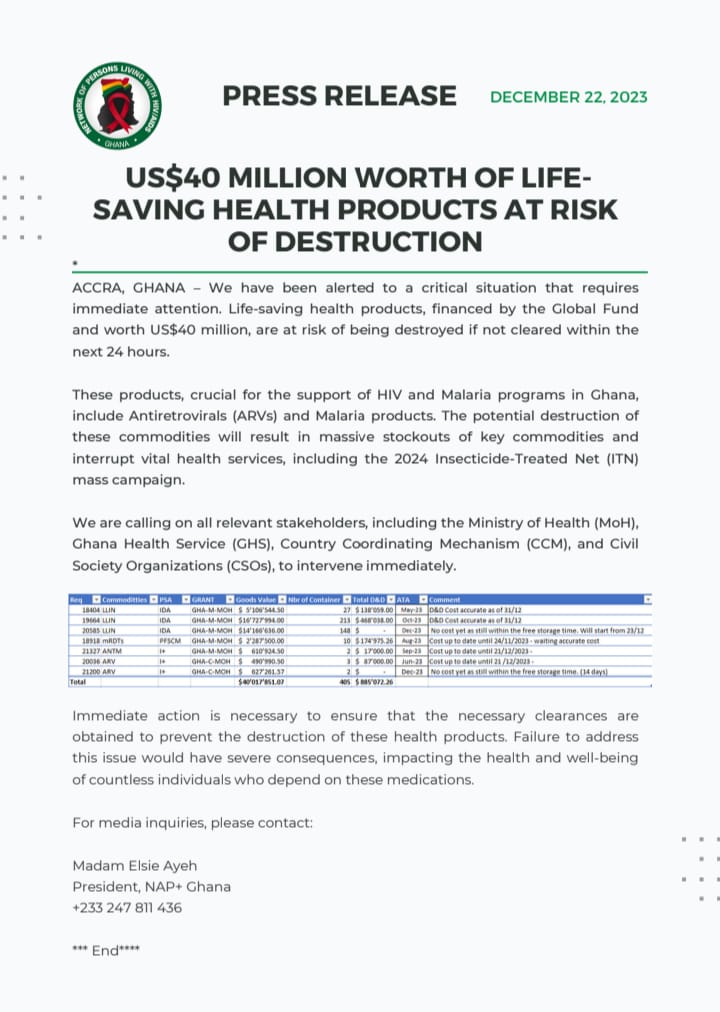
Seattle — New study paves the way for scale-up of TB prevention among people living with HIV, who are dying from TB in large numbers
In an important moment for tuberculosis (TB) control, a new study finds that a shorter regimen to prevent TB can be safely co-administered with dolutegravir (DTG)—the first-line drug to treat HIV in many high-burden TB countries.
Presented today at the Conference on Retroviruses and Opportunistic Infections (CROI), the study found that weekly administration of rifapentine and isoniazid (3HP) for three months in adults with HIV taking DTG was well-tolerated, with no need for dose-adjustment. The findings put to rest fears of potential drug interactions with DTG and pave the way for scale-up of the 3HP regimen in 12 high-burden TB countries across three continents.
"We've known for some time that preventive therapy for TB is a critical component of any effort to control the TB epidemic," said Prof. Gavin Churchyard, group CEO of the Aurum Institute and co-principal investigator on the study. "But current treatment options are too long and potentially more toxic. These findings will allow us to move forward with co-administration of 3HP and DTG, offering the best treatment options to those who need it the most."
The study, funded by Unitaid and carried out in South Africa by the Aurum Institute and the Johns Hopkins University Center for TB Research, looked at the safety and pharmacokinetics of giving 3HP with DTG. Researchers enrolled 60 adults with HIV, who received DTG for eight weeks, then began 3HP; after completion of 3HP, all participants were followed for four more weeks. Overall, co-administration of DTG and 3HP was well-tolerated.
"We now know that it's safe to take these two game-changing regimens together, and it also appears that doses of dolutegravir do not need to be adjusted." said Dr. Kelly Dooley, associate professor of medicine at the Johns Hopkins University School of Medicine and co-principal investigator on the study.
"These are the results we have all been waiting for," Unitaid Executive Director Lelio Marmora said. "The evidence that 3HP is safe to use with dolutegravir, today's most advanced HIV treatment, allows us to scale up short-course preventive therapy for TB, which is the leading cause of death in people living with HIV."
People living with HIV are at high risk of developing TB and are 20 to 37 times more likely to move from latent infection to active TB. Meeting in New York in September 2018, heads of states committed to providing preventive treatment to at least 30 million people, including six million people living with HIV by 2022.
"People being successfully treated for HIV are now dying from TB in high numbers, and that's unacceptable," said Dr. Yogan Pillay, deputy director general of health, South African National Department of Health. "These new findings will allow us to prevent many of these deaths."
Preventing TB to End TB
Treatment of TB infection is referred to as TB preventive therapy (TPT) and is one of the most powerful ways to prevent TB. If left untreated, TB infection can develop into active TB disease, the form of TB that makes people sick and is capable of being transmitted from one person to another.
TB preventive therapy has two major goals: preventing people who are already infected with the TB bacterium from falling ill with active TB disease and protecting people who are uninfected but at risk of TB exposure from getting infected in the first place.
"Preventive therapy, including 3HP, is one of the best ways to keep individuals and families safe from TB, which in turn helps communities become—and remain—TB free," said Dr. Paul Davis, chairperson of the Aurum Institute. "The 3HP regimen gives us hope that by using a Find, Treat and Prevent TB strategy, we will finally end the TB epidemic."
The 3HP regimen offers a shorter, safer alternativeto the older standard of care—isoniazid preventive therapy (IPT)—in which people take isoniazid every day for between six and 36 months. Large, multi-country clinical trials have established the efficacy of 3HP in preventing TB. In February 2018, the World Health Organization (WHO) released consolidated guidelines for the treatment of latent TB infection that recommend the use of 3HP for people living with HIV and contacts of TB cases of any age.
Next Steps
Based on today's results, Aurum, through the Unitaid-funded IMPAACT4TB project, is moving ahead with the introduction of 3HP in 12 high-burden countries: Brazil, Ghana, Ethiopia, Kenya, Tanzania, Malawi, Zimbabwe, Mozambique, South Africa, India, Cambodia and Indonesia. Together, these countries represent 50 percent of the global TB burden. The project will prioritize 3HP for people living with HIV and children under five, and subsequently all those in close contact with TB patients.
3HP is already approved for the treatment of TB infection by the US Food and Drug Administration and is recommended by the US Centers for Disease Control and Prevention. The Aurum Institute and its partners will also be pursuing regulatory approval of 3HP products in project countries. In high-TB burden countries where rifapentine is not yet registered, an importation waiver to use rifapentine will be obtained through the Stop TB Partnership's Global Drug Facility.
The results of this study will be shared with the WHO and project countries and the Aurum Institute will work closely with them so that the findings can be included into relevant treatment guidelines.
"We're now preparing to start 400,000-600,000 people on 3HP across 12 countries in order to catalyze an increase in supply, demand for and uptake of 3HP," added Prof. Churchyard. "The next few years will focus on reducing the price of 3HP and addressing barriers to supply at the global level."
About Aurum
Established in 1998, the Aurum Institute is an African Public Benefit Organisation whose mission is to improve the health of people and communities living in poverty through innovation in global health research, systems and delivery. It is rooted in Africa is dedicated to researching, supporting and implementing innovative, integrated approaches to Global Health with their headquarters in South Africa with offices in the USA, Ghana and Mozambique. The Aurum Institute has developed itself into a leading player, bridging the worlds of research, policy and implementation for impact. www.auruminstitute.org
About Unitaid
Unitaid brings the power of new medical discoveries to the people who most need them and helps set the stage for large-scale introduction of new health products by collaborating with governments and partners such as PEPFAR, the Global Fund and WHO. Unitaid invests in new ways to prevent, diagnose and treat diseases including HIV/AIDS, hepatitis C, tuberculosis and malaria more quickly, affordably and effectively. https://unitaid.eu/
About John Hopkins Center for TB Research
The Johns Hopkins Center for Tuberculosis Research was founded in 1998 to contribute to global tuberculosis control through innovative research and training. Its research efforts span the fields of epidemiology, clinical trials, diagnostics and basic science, with faculty from six departments in the Johns Hopkins University Schools of Medicine, Public Health and Nursing. Clinical research sites are located in Baltimore City, Maryland, as well as sites in Brazil, South Africa, India, and other TB high burden countries. http://tbcenter.jhu.edu/
Read Full Story












Facebook
Twitter
Pinterest
Instagram
Google+
YouTube
LinkedIn
RSS